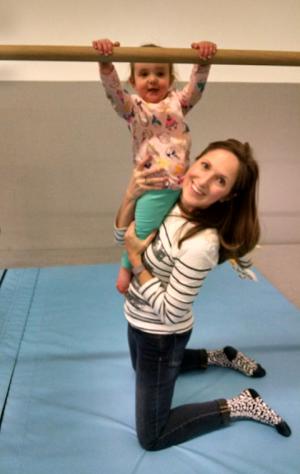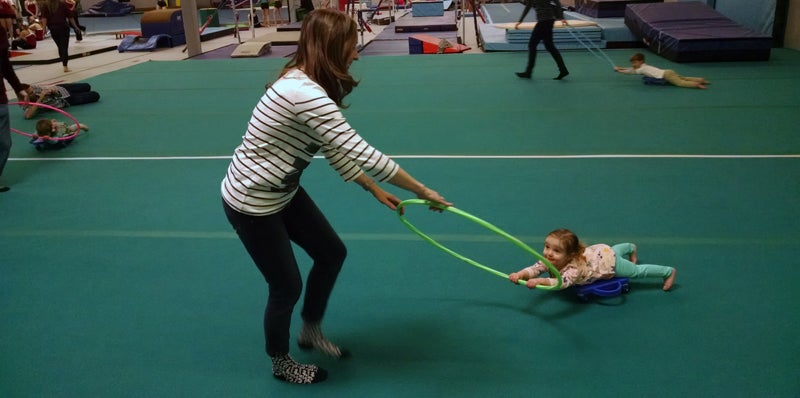Five questions for Jill Landsbaugh Kaar

Childhood obesity and rates of Type 2 diabetes are rising across the country, and while researchers have a handle on some of the main culprits – sugary foods and inactivity, for instance – there still is much to be done to determine just how much is too much or how little is too little in order to keep children healthy.
Jill Landsbaugh Kaar, an assistant professor in the Department of Pediatrics – Section of Endocrinology at the CU School of Medicine at the Anschutz Medical Campus, is one of those dedicated researchers who is contributing to the effort.
She recently helped draft a guideline for the American Heart Association that stresses children should consume no more than six teaspoons of added sugar per day. Currently, the average child consumes more than twice that amount. And while eating healthy foods and getting exercise has long been a factor in preventing weight gain and disease, there are other factors that can affect health – screen time, for instance, and the number of hours of sleep someone gets each night.
Kaar has long been interested in the factors that contribute to obesity and disease. Her current research hopes to unravel the patterns of behavior that are optimal to a healthy body.
She and her husband, who is a chemical engineer professor at CU Boulder, came to Colorado in 2010, straight from post-docs at the UK Medical Research Council in Cambridge, England.
“My husband was offered a job at CU and, given that CU was a good academic fit for both of us, we decided to move to Colorado,” she said. She began her appointment in the Department of Pediatrics in 2013.

As the mom of a toddler, her research has taken on an added element as she strives to model good behaviors that her daughter, Zoe, will learn. Her leisure time is spent chasing her daughter around home, reading books, going for walks – with Zoe – and spinning classes, when she has some weekend time to herself.
“When I started this journey, I wanted to help people by learning how nutrition affected obesity, but now I know that there are so many other variables we need to consider, like the amount of time you are active, your screen time and sleep,” she said. “If you exercise for the recommended 60 minutes most days of the week, but your job or school requires you to sit for eight hours, five days a week, are you living a ‘healthy lifestyle’? It’s one of the questions I want to unravel.”
1. How did you choose this career and area of research?
As a teenager, I became interested in nutrition and wanted to learn how the body processed food, vitamins and nutrients. When I started applying for colleges, I knew I wanted to major in nutrition. As an undergraduate, I learned about all of these things and then wanted to learn more about how to have a healthy lifestyle.
I always was interested in why some people are at a healthy weight, but others struggled with their weight. I wanted to help them. I always thought the issue was a matter of diet and physical activity. After obtaining my nutrition degree, I decided to apply to graduate school and focused on the other side of the energy balance equation, physical activity.
My master’s degree is in exercise physiology and my Ph.D. is in physical activity epidemiology. My postdoc work looked at maternal and child health epidemiology, which helped me understand that the issues don’t always begin with kids, but with parents, who are the decision-makers.
As I learned more and more about obesity, the sleep component came to the forefront, and that is a new direction I am taking with my research. It’s not just what you eat or how you exercise, metabolism is also an outcome of how you sleep. If you aren’t getting enough sleep, you might not be getting the benefits of eating healthy and exercising during the day.
2. What are the biggest roadblocks to restructuring not-so-healthy lifestyles into healthy ones?
I’m afraid the answer is worth a million dollars because I don’t think there is one single “answer.” There are many variables and that is what we are trying to determine. As a new parent, I think one of the obstacles could be that we are so busy as a society, constantly juggling “family” schedules. Young children and teenagers especially are very busy. The school day is busy, and then there are after-school activities and hours of homework. Mom and Dad have their full-time jobs and have to rush kids to activities. This often results in quick dinners with one or two family members in between moving from one place to the next. The idea of family dinners may not be feasible for these families or at least not having family dinners every night.
When I was growing up, it was more of the norm that you had one parent who stayed at home, but that is rare now: Most families need two incomes. This often means that the entire family is not home at the same time and that together time may be very short. We still want that important family meal, even if it is “fast,” so one thing we can do is educate people and give them the tools they need to plan ahead, knowing their week is going to be limited for family meal time. Even if you only have 45 minutes for a meal, you can get a healthy, affordable meal on the table in 20 minutes and still get out the door on time with a bit of prep earlier in the week.
The current trend, if you follow advertising, is delivered pre-prepared meals, where all you have to do is heat them up. But these types of meals can be expensive, about $30 for a family of four, and that’s not realistic for all families.
Activities are important, but so is diet, and so is sleep. Which one can you compromise and still lead a healthy lifestyle? When you add the fact in that kids say homework takes longer and longer to finish, and some kids don’t get to bed until midnight, that adds to the problem.
Kids learn from their parents, so it is about role-modeling. You can teach them that dinnertime is an event where you have a well-balanced meal and all check in with each other. You teach them that this is a nice time and you make it enjoyable as a family event.
3. What happens when a child is no longer under your roof and you don’t have a say when it comes to eating healthy or balancing life?

Perhaps think of it as if you are teaching kids values and morals. From the time they are young, you teach them to say “please” and “thank you.” Your child knows they have to say these things, and while they might not always do it, they have learned the importance of manners. The same goes for diet. While there is not a lot of research that looks at what happens from adolescence to adulthood, when you can no longer keep tabs on them, they have learned good behaviors from you. You have taught them to look at their schedules and plan. As a parent, you do what you can: model good health behavior and expose your children to healthy foods that taste good – and perhaps even teach them how to cook. My own child is barely 2, but we’ve already started those types of behaviors.
I don’t believe in counting calories for any age group because it is an unrealistic thing to ask families to do. It’s very time-consuming, and it’s not a lifestyle you are going to be able to maintain. Instead, I try to instill healthy eating. For breakfast, for instance, we eat yogurt and fruit and maybe a piece of toast or cereal. My daughter eats the same thing. I don’t give her sugared cereal or cookies; I chose healthier options for her to eat. I feel kids will have enough opportunity for all of the other sugary stuff, and as a parent, I want to provide her with good tasting, healthier options at home when it is more in my control. I am sure if I offered my daughter a yogurt or cookie, she would take the cookie, so I give her more limited choices; strawberry or vanilla yogurt, apple or orange slices, etc.
Physical activity is the same idea. My daughter doesn’t see me sitting on the couch and watching TV. We keep the television off and play with her. We go outdoors whenever we can. At bedtime, we read books. As I delve deeper into sleep research, I understand the importance of not having blue light – computers or other screen time -- before bedtime. A person needs more calm time then, and this is a behavior that a parent can monitor and change for a child.
4. You recently co-authored new recommendations for the American Heart Association saying that children ages 2 to 18 should consume less than six teaspoons of added sugars each day. How did you and your colleagues reach this figure?
There is not a lot of literature on how much sugar is linked to certain outcomes like obesity or diabetes. This was an invited article by the American Heart Association, which convened a group of researchers – both medical doctors and Ph.D.s – to comb the literature and find out what we know now, where the research gaps are, and where does research need to move forward. The idea was to recommend a number that will improve child health.
My contribution to the guideline was related to childhood obesity and diabetes. There’s not a lot of literature about the exact amount of sugar consumed that leads to obesity. So, for instance, nothing out there says that if you consume X number of sugary beverages, you are twice as likely to become obese. But what we do know is how much sugar kids are eating today from detailed food records. We know that preschoolers have about 12 teaspoons of sugar a day. We also know that obesity and Type 2 diabetes is increasing, and so we know that 12 teaspoons may be too much.
We don’t want kids to have more than one sugar-sweetened beverage, which contains 10 to 12 teaspoons of sugar, each week. The average kid probably has one of these beverages each day.
Instead of being scientifically driven, this recommendation was a reflection of the expert opinions of what pediatricians and dieticians think would be best. We worked on these guidelines for more than a year and I had the opportunity to work with a great team of researchers. I really enjoyed working on this project.
5.You mentioned that your current research deals with how many behaviors affect obesity. What does your research entail?
I currently have a scientist development award from the American Heart Association to study health behavior patterns – or lifestyles – of children. These behaviors include diet, screen time, sleep and activity. I am trying to unravel these patterns.
Let’s assume that you have some kids with healthy behaviors in all of those categories: They get adequate sleep and physical activity and have limited screen time and they eat well. Other kids don’t do any of those things well – or at least what we think they should be doing to maintain good health. Kids with healthy lifestyles are going to have a good BMI (Body Mass Index), while the poor health behavior pattern group will most likely be linked to a higher BMI and therefore have a higher risk of obesity.
We don’t know how “unhealthy” the patterns are in-between, those mixed lifestyles of kids that have some healthy and some unhealthy behaviors. What about a child that eats OK, and gets some physical activity every day, but has six hours of screen time? Are they at risk of obesity equivalent to the child with poor or unhealthy lifestyle behaviors? We need to know the combinations that lead to the child having an increased risk of obesity.
The second part of the study is what happens if you have a healthy lifestyle pattern – you eat right and you exercise -- but you have poor sleep. Does this mean you have a higher risk of obesity? My hypothesis for the research is that if you have poor sleep, you don’t get the same benefits of having that healthy lifestyle pattern.


